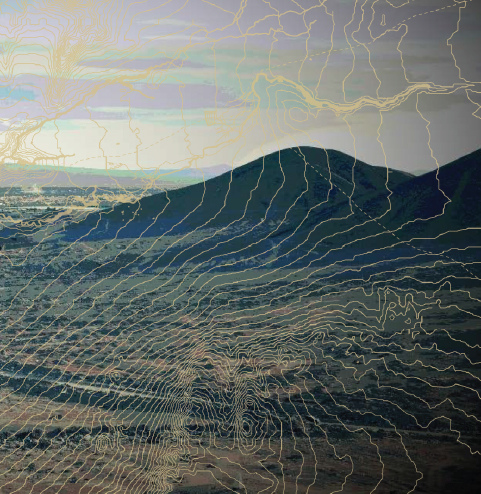The Camp and the City is a study on Calama, the most important mining center in Chile, a 150,000 inhabitants city located in the Atacama Desert around which 14 extraction sites gravitate. Chuquicamata and Rodomiro Tomic, the two biggest mines located within a 20km radius from the center of Calama, both owned by CODELCO, together provide about 30% of Chile’s copper production. This corresponds to almost 10% of the world’s copper consumption. Although the region significantly contributes to the Chilean GDP, its living conditions are among the poorest in the country. The mining industry severely contaminates the quality of the land, water, and air, and it also contributes to promote a life style based on the exploitation of local resources, as if everything in the area were subject to the logic and at disposal of the mining industry and its workers. Despite the numerous attempts to improve the urban quality of the city mitigating the conflicts between indigenous populations, residents, mining workers, and mining related companies, the expoitation of the city and territory driven by mining company stakeholders prevail. Especially since the forced closure of the mining camp of Chuquicamata, aprox 20 km from Calama, lead to the relocation of its inhabitants in Calama’s most precious area, the oasis- once one of the biggest oasis in the world.
The main objective of the research project was to understand and redefine the role of Calama in relation to its territory, the mining industry, and the imaginary of its inhabitants. With a team of researchers and students, we studied the systems of water, waste, food, and transportation in the city and the region; we studied its evolution over time in relation to the changes happening in the mining industry highlighting the specific dynamics generated by its temporal and spacial characteristics. Three main thesis led the development of the research project, corroborated by demographic and geographical data, maps, and photographic essays. The first one, is that historically, and by the general public, Calama was conceived as the mining city of Chuquicamata and Rodomiro Tomic, the two main mining sites next to it both owned by CODELCO. This led to a vicous circle in which the company is seen as responsible for all the negative externalities that are impacting the city but it is also claiming the right to consider the urban territory as part of the mining infrastructure; with an evident loss in democratic sovereignity over the urban territory which especially affects those that are not working for the mining company. We calculated instead that a cluster of 14 mines gravitates around Calama and that the area should therefore take this into account when defining urban transformations and policies. Second, every mining operation is necessarily ephemeral: extractions sites and camps are built with an expiration date, corresponding to the exhaustion of resources, their obsolesence, or technological innovation. Many of the plans for Calama are not taking into account its future after-mining. Finally, the bi-univocal relation between mining industry and workers leads to an understanding of Calama as a camp, an efficient organization of space and infrastructure in order to guarantee the well functioning and productivity of the industry.Several populations inhabit instead the city, any of which characterized by different spacial and temporal projection. The indigenous population for instance, has been living on the oasis for thousands of years, lives of its resources, honors the anchestors buried next to it. A vision for the future after-mining may be found there.
The Calama 2050. Territories of Extraction project started as a collaboration between CODELCO (Corporación Nacional del Cobre), the state owned largest mining company in Chile, Universidad Adolfo Ibañez and the Harvard University David Rockefeller Center for Latin American Studies. The results have also been published in the book “The Camp and the City. Territories of Extraction” by J. Sordi, F. Vera, L.Valenzuela as a base and common ground for future actions. The book also includes essays by Rahul Mehorotra, Diane Davis (Harvard University), Rania Gohsn and El Hadi Jazairy (MIT), Pablo Allard (Universidad del Desarrollo), et al.
Links:
The Camp and the City: Territories of Extraction Book Launch – Harvard University Graduate School of Design. March 27, 2018
The Camp and the City: Territories of Extraction. Jeannette Sordi, Luis Valenzuela, Felipe Vera. Listlab, 2017. Book excerpts.







Leave a comment